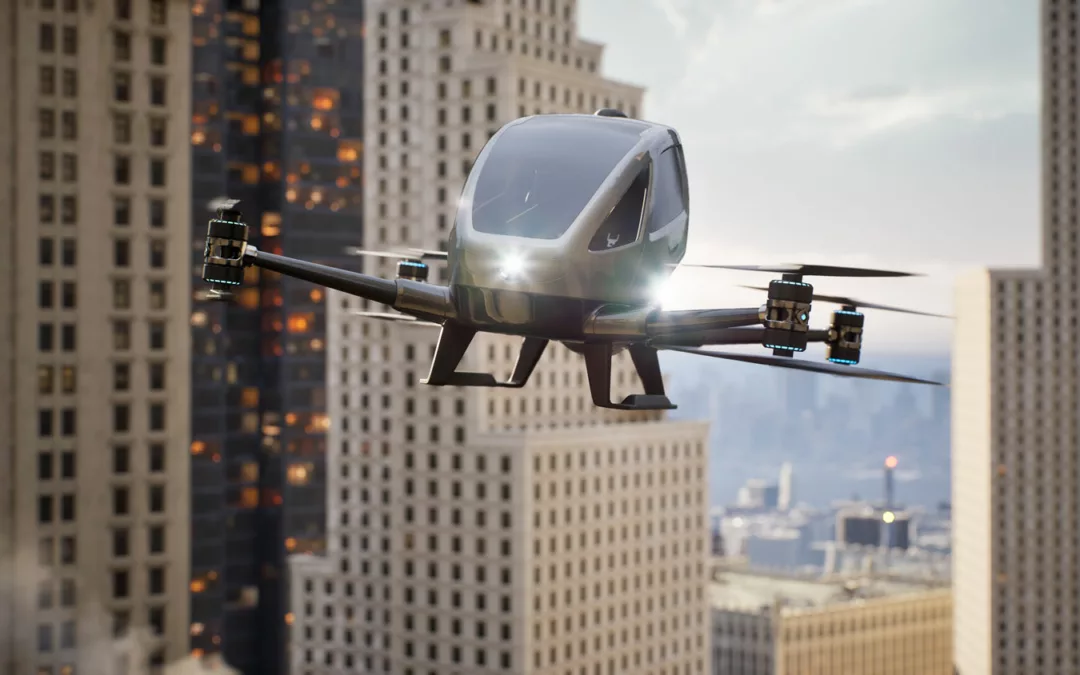The Importance of Addressing Non-Cooperative Obstacle Detection and Bird Strike Prevention
The fields of Urban Air Mobility (UAM) and Advanced Air Mobility (AAM) are rapidly evolving with new and surprising developments coming at an impressive speed. A key aspect of this revolution is electric vertical take-off and landing vehicles (eVTOLs) and drones carrying goods, particularly valuable ones such as organs and blood. These flying machines are changing the rules of the game in urban air mobility, but along with these opportunities come significant challenges, mainly the detection of uncooperative obstacles and the prevention of bird strikes.
Take-off and landing are crucial moments during which the risk of collision is highest. This problem is particularly pronounced in vertiports, key locations for UAM and AAM, as they are often located very close to urban areas with high bird density. The need for innovative and sustainable technologies to address these challenges is therefore an essential element in ensuring a safe environment for piloted and unmanned aerial vehicles.
In this context and in the field of ATM (Air Traffic Management), the solution design teams and technological crews of THE EDGE COMPANY have distinguished themselves with the development of a very advanced system based on artificial intelligence: BCMS Ventur-C, in where C means City and defines its application in this particular sector.
The system uses a complex system of cameras, neural networks and an artificial intelligence algorithm (proprietary) to process the information captured by the optical sensors and returns it to the operators with a front end that is friendly but complete with all information. Information is then transformed into useful data for future prediction and knowledge of the environment in which it operates.
The system is capable of detecting obstacles and birds with a true positive rate of 95 to 98 per cent, providing real-time signals that allow eVTOLs and drones to carry out evasive maneuvers, thus ensuring safe maneuvers both in the vertiport and in the defined airspace along city corridors.
Furthermore, BCMS Ventur is an excellent example of how technology can be used to protect wildlife and the ecosystem in general.
The prevention of bird strikes is not only a matter of safety for aerial vehicles, but also an important step in protecting the ecosystem.
However, as already mentioned, the challenge does not stop at vertiports.
Low-altitude flight in densely populated urban spaces entails a number of complexities that require the use of more sophisticated and high-performance detection technologies than in the past, when problems were only addressed by human intervention through BCUs or radar technologies that were less punctual and precise in data collection and unable to recognise species. For a full development of the sector, it is therefore essential to consider all these unavoidable and new needs from the outset.
In addition, effectively addressing these challenges can help to promote greater acceptance by citizens concerned about science fiction scenarios and better communicate the potential of innovative and fully feasible transport, with due care.
In the next article, we will focus on safety along routes through urban areas with a high density of human traffic and we will explore the performance offered by BCMS Ventur and compare this with the European Union Aviation Safety Agency (EASA) road map in terms of safety.
Stay tuned to find out how artificial intelligence, ecosystem preservation and wildlife protection are intertwined with innovation in UAM and AAM.

